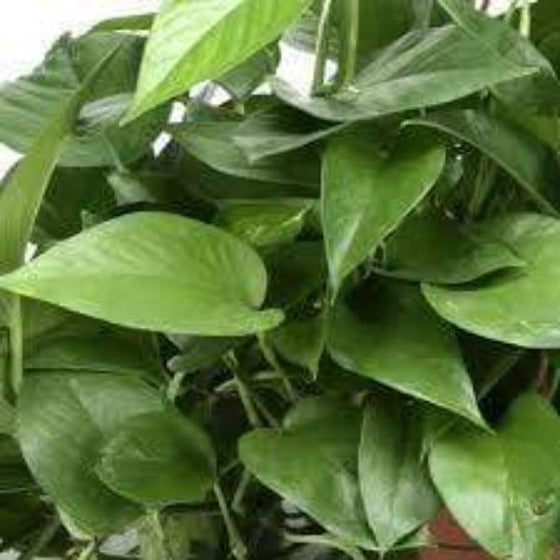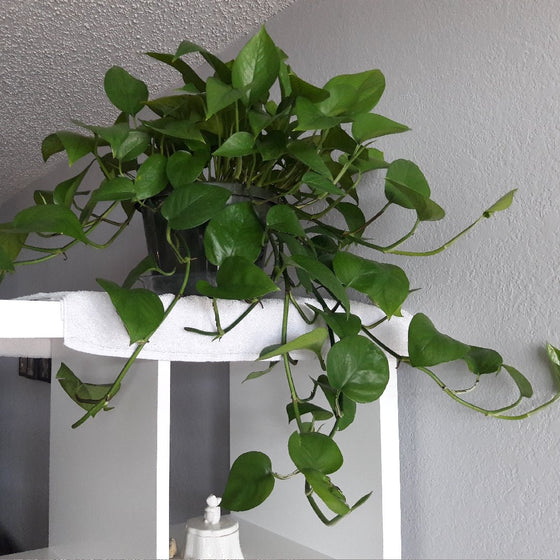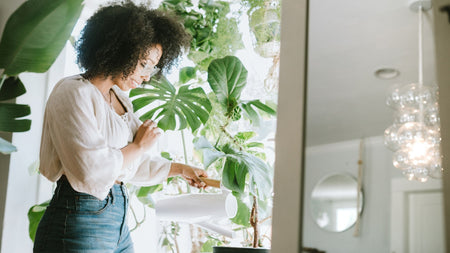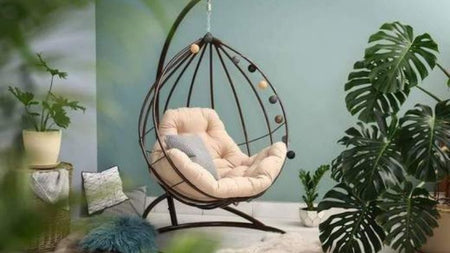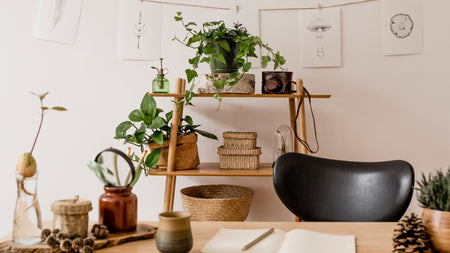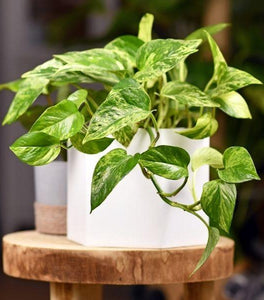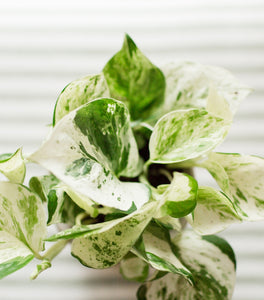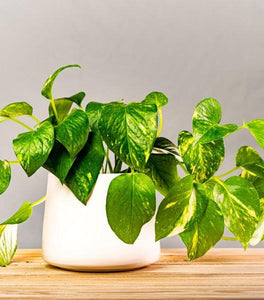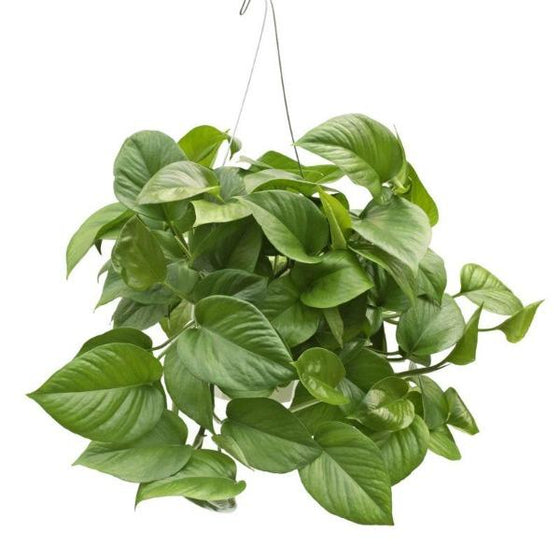
Images Depicted Range in Maturity & Container Size
Pots & Decorations Not Included Unless Otherwise Stated
Jade Pothos for Sale Online
Jade Pothos (Epipremnum aureum 'Jade') is a stunning, low-maintenance indoor plant known for its glossy, heart-shaped green leaves. Its rich, dark green foliage adds a lush, tropical feel to any indoor space, making it perfect for hanging baskets, shelves, or trailing from pots. This hardy vine thrives in a variety of light conditions, from low to bright, indirect light, making it ideal for any room in your home or office. Known for its air-purifying qualities, Jade Pothos not only enhances your decor but also improves the air quality in your living spaces.
As a highly adaptable plant, Jade Pothos is perfect for beginner gardeners due to its drought tolerance and ease of care. It requires minimal watering and is forgiving of occasional neglect, making it a reliable and beautiful addition to any indoor plant collection. Whether placed in a container or allowed to trail as a hanging plant, Jade Pothos will bring vibrant greenery to your space with little effort. Its ability to thrive in various environments, along with its air-cleaning properties, makes it an essential plant for both novice and experienced indoor gardeners.
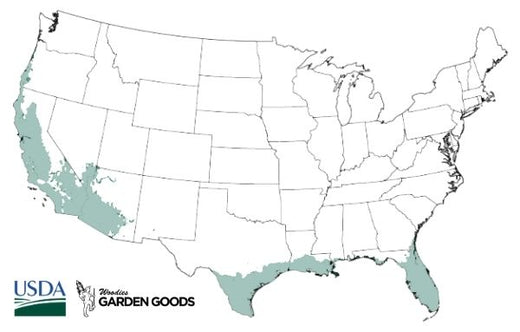
| Hardiness Zone: | 9-11 |
|---|---|
| Mature Height: | 6 to 8 Inches |
| Mature Width: | 18+ Inches |
| Classification: | Green foliage |
| Sunlight: | Fluorescent to bright, direct light |
| Habit: | Trailing |
| Flower Color: | Does not flower indoors (white spathe) |
| Foliage: | Green, shiny |
| Soil Condition: | Regular potting mix |
| Water Requirements: | Likes to stay slightly moist |
| Uses: | Best in hanging baskets or plant stands to cascade |
How to Care for Jade Pothos
Be sure to read our planting instructions to ensure a healthy and happy plant for years to come!

What is the best light for Jade Pothos Plants?
The best light for Jade Pothos plants is bright, indirect light, which encourages healthy growth and maintains the plant's rich, dark green leaves. Although Jade Pothos can tolerate low-light conditions, placing it in an area with filtered light, such as near a north or east-facing window, will help the plant thrive and promote more vigorous growth. In brighter light, the plant's leaves may develop a more vibrant color, but be careful to avoid direct sunlight, as this can scorch the delicate foliage and cause the leaves to yellow. In low-light environments, Jade Pothos will still grow at a slower rate, and the leaves may become slightly smaller. It's an excellent choice for offices, bathrooms, or rooms with limited natural light, as it adapts well to these conditions. However, if you want to encourage faster growth and fuller, more lush foliage, positioning your Jade Pothos in bright, indirect light is ideal. Whether placed in a hanging basket or allowed to trail from a shelf, proper lighting will ensure your Jade Pothos remains healthy and vibrant.

What is the best soil for Jade Pothos Plants?
The best soil for Jade Pothos plants is a well-draining, lightweight potting mix that allows water to flow through easily while retaining enough moisture for the roots. A high-quality, all-purpose potting soil mixed with perlite or sand works perfectly, as it prevents the roots from becoming waterlogged, which can lead to root rot. The ideal soil should also provide good aeration, ensuring the roots receive plenty of oxygen to support healthy growth. Avoid dense, heavy soils that retain too much water, as Jade Pothos thrives in a more porous mix that dries out slightly between waterings. In addition to good drainage, Jade Pothos benefits from soil that is slightly acidic to neutral, with a pH range of 6.0 to 7.0. Using a potting mix that includes organic materials like peat moss or coconut coir can help maintain the right balance of moisture and acidity for the plant. Repotting your Jade Pothos every couple of years with fresh soil will ensure it continues to grow vigorously, preventing nutrient depletion in the soil over time. Proper soil selection is key to keeping your Jade Pothos healthy, allowing it to thrive in a variety of indoor environments.
How should I water a Jade Pothos Plants?
The best soil for Jade Pothos plants is a well-draining, aerated potting mix that retains some moisture but doesn't become waterlogged. A high-quality, all-purpose potting soil mixed with additives like perlite, vermiculite, or coarse sand is ideal, as these components improve drainage and prevent compacted soil. Jade Pothos thrives in a lightweight, porous mix that allows the roots to breathe and minimizes the risk of root rot. The soil should dry out slightly between waterings, making it important to avoid heavy, clay-based soils that retain too much water. In terms of pH, Jade Pothos prefers slightly acidic to neutral soil, with a pH range between 6.0 and 7.0. You can enhance the soil with organic materials like peat moss or coconut coir, which help maintain moisture balance and provide nutrients while ensuring proper drainage. Repotting your Jade Pothos every couple of years with fresh, nutrient-rich soil will support its ongoing growth and health. By choosing the right soil mix, you’ll create an optimal environment for your Jade Pothos to thrive, ensuring lush, healthy foliage in your indoor space.
How do I fertilize Jade Pothos Plants?
To fertilize Jade Pothos plants, use a balanced, water-soluble fertilizer with a ratio like 10-10-10 or 20-20-20 during the active growing season, which is typically spring and summer. Dilute the fertilizer to half strength and apply it once a month to provide essential nutrients like nitrogen, phosphorus, and potassium that encourage healthy foliage and root development. Be sure to water the plant before fertilizing to prevent the roots from being damaged by the concentrated solution. This feeding schedule will keep your Jade Pothos lush and vibrant, promoting strong growth and maintaining its beautiful green leaves. During the fall and winter, Jade Pothos enters a more dormant phase and requires less feeding. Reduce fertilization to once every 2-3 months or stop entirely during this period to avoid overfeeding, which can lead to salt buildup in the soil and harm the plant. If you're using an organic fertilizer, like compost tea or fish emulsion, these can also be applied during the growing season following a similar schedule. Proper fertilization will ensure your Jade Pothos remains healthy and vigorous, producing long, trailing vines with rich, glossy leaves throughout the year.

